
The Vrbas Banovina or Vrbas Banate, was a province (banovina) of the Kingdom of Yugoslavia between 1929 and 1941. It was named after the Vrbas River and consisted mostly of territory in western Bosnia with its capital at Banja Luka. Dvor district of present-day Croatia was also part of the Vrbas Banovina.

Gradiška, formerly Bosanska Gradiška, is a city in Republika Srpska, Bosnia and Herzegovina. As of 2013, it has a population of 51,727 inhabitants, while the city of Gradiška has a population of 14,368 inhabitants.
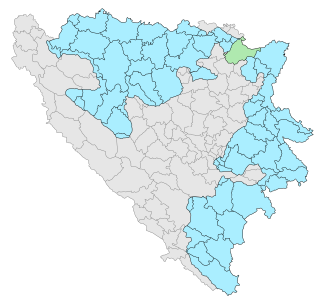
Under the "Law on Territorial Organization and Local Self-Government" adopted in 1994, Republika Srpska was divided into 80 municipalities. After the conclusion of the Dayton Peace Agreement, the law was amended in 1996 to reflect the changes to the entity's borders and now provides for the division of Republika Srpska into 64 municipalities.
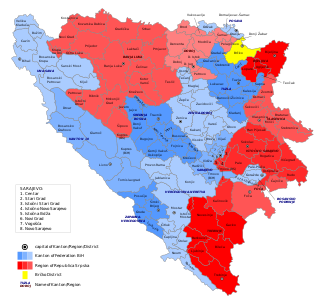
In Bosnia and Herzegovina, the smallest administrative unit is the municipality. Prior to the 1992–95 Bosnian War there were 109 municipalities in what was then Socialist Republic of Bosnia and Herzegovina. Ten of these formed the area of the capital Sarajevo.

Radislav Krstić is a former Bosnian Serb Deputy Commander and later Chief of Staff of the Drina Corps of the Army of Republika Srpska from October 1994 until 12 July 1995. He was promoted to the rank of major general in June 1995 and assumed command of the Drina Corps on 13 July 1995.

Dragan Obrenović is a former Bosnian Serb senior officer and commander in the Yugoslav People's Army (JNA) and the Bosnian Serb Army (VRS).
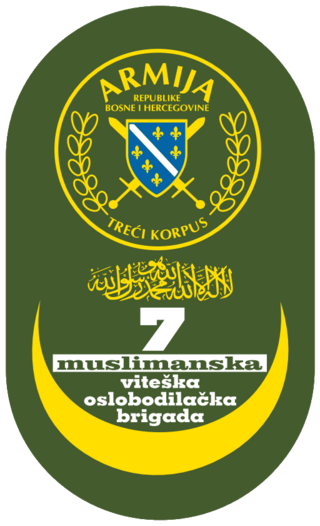
The 7th Muslim brigade was an elite all-volunteer brigade of the 3rd Corps of the Army of the Republic of Bosnia and Herzegovina. It served as the ARBiH's primary assault brigade in Central Bosnia, and was headquartered in Zenica. The brigade's manpower largely came from the cities of Zenica, Travnik, and Kakanj; however, there were soldiers from all over Bosnia who served in its ranks. During the war, the brigade liberated over 1,100 km2 of territory, including multiple cities, as well as numerous villages and mountains. Some of the most notable combat actions of the 7th Muslim brigade include the liberation of Vareš, Fojnica, Bugojno, Kakanj, and Travnik from the hands of HVO forces, as well as the defence of Mt. Igman and the liberation of liberation of Mt. Vlašić (Opaljenik), Teslić-Šerić (Jezera), Nabožić (Ilijaš), and Vozuća and the Ozren pocket from VRS forces.

The 1st Corps was one of seven units of the Army of the Republic of Bosnia and Herzegovina established in 1992, in the early part of the Bosnian War.

This section is about the history of the Army of the Republic of Bosnia and Herzegovina that existed from 1992 to 1995, then it was formed into two armies of the two entities from 1998 to 2005 and finally transformed into the Armed Forces of Bosnia and Herzegovina (OSBIH).

Državna Tajna is a book by Semir Halilović, son of Bosnian general Sefer Halilović, published in 2005. The book has the tagline "STROGO POVJERLJIVO"

The 6th Corps was a corps of the Army of the Republic of Bosnia and Herzegovina.
Operation Corridor 92 was the largest operation conducted during the Bosnian War by the Army of Republika Srpska (VRS) against the forces of the Croatian Defence Council (HVO) and the Croatian Army (HV) in the Bosanska Posavina region of northern Bosnia and Herzegovina between 24 June and 6 October 1992. The objective of the offensive was to re-establish a road link between the city of Banja Luka in the west of the country and the eastern parts of the territory controlled by the Bosnian Serbs. The offensive was prompted by the capture of Derventa by the HV and the HVO – a move that blocked the single overland road between the VRS-controlled territories.

The 369th (Croatian) Infantry Division was a legionary division of the German Army (Wehrmacht) during World War II.

The Battle of Kupres was a battle of the Bosnian War, fought between the Army of the Republic of Bosnia and Herzegovina (ARBiH) and the Croatian Defence Council (HVO) on one side and the Army of Republika Srpska (VRS) on the other from 20 October to 3 November 1994. It marks the first tangible evidence of the Bosniak–Croat alliance set out in the Washington Agreement of March 1994, brokered by the United States to end the Croat–Bosniak War fought between the ARBiH and the HVO in Bosnia and Herzegovina. The ARBiH and the HVO were not coordinated at first, rather they launched separate operations aimed at capture of Kupres.
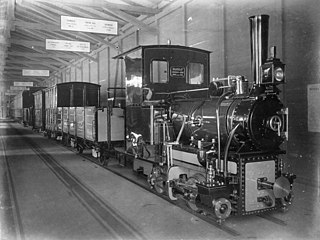
Most Bosnian-gauge railway lines were built during the Austro-Hungarian Empire. Several 760 mm gauge railways were planned in order to link the extensive narrow-gauge railways in the Austro-Hungarian Empire with those in Bosnia and Herzegovina. Until the outbreak of the Balkan Wars in 1912 several were constructed.
Operation Southern Move was the final Croatian Army (HV) and Croatian Defence Council (HVO) offensive of the Bosnian War. It took place in western Bosnia and Herzegovina on 8–11 October 1995. Its goal was to help the Army of the Republic of Bosnia and Herzegovina (ARBiH) whose positions around the town of Ključ, captured by them during Operation Sana, were endangered by a counteroffensive by the Army of Republika Srpska (VRS). The objectives of Operation Southern Move included the capture of the town of Mrkonjić Grad and positions on the Manjača Mountain which would allow the HV and the HVO to directly threaten Banja Luka, the largest city controlled by Bosnian Serbs. Finally, the offensive was also aimed at capturing the Bočac Hydroelectric Power Station, the last significant source of electricity under VRS control in western Bosnia and Herzegovina. The combined HV and HVO forces were under the overall command of HV Major General Ante Gotovina.
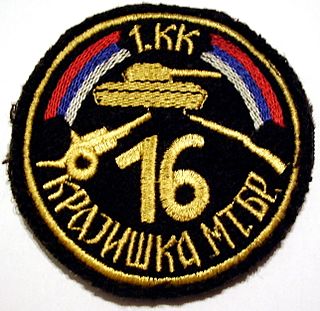
The 16th Krajina Motorized Brigade was a motorized unit based in Banja Luka part of the 1st Krajina Corps of the Army of Republika Srpska.

1st Krajina Corps was one of the seven corps of the Army of Republika Srpska (VRS). Before implementation into the Army of Republika Srpska, the corps was known as 5th Corps of Yugoslav People's Army or Banja Luka Corps. It was because of this fact that it was successor of the infrastructure, organization and most of the equipment. The main task of the corps was to defend western parts of the Republika Srpska, today however these areas are mostly part of Banja Luka region. It was the most numbered corps of VRS with between 51,000 and 60,000 soldiers. During the War in Bosnia and Herzegovina 6,997 died, 27,176 wounded and 1,031 soldiers have been missing.
















